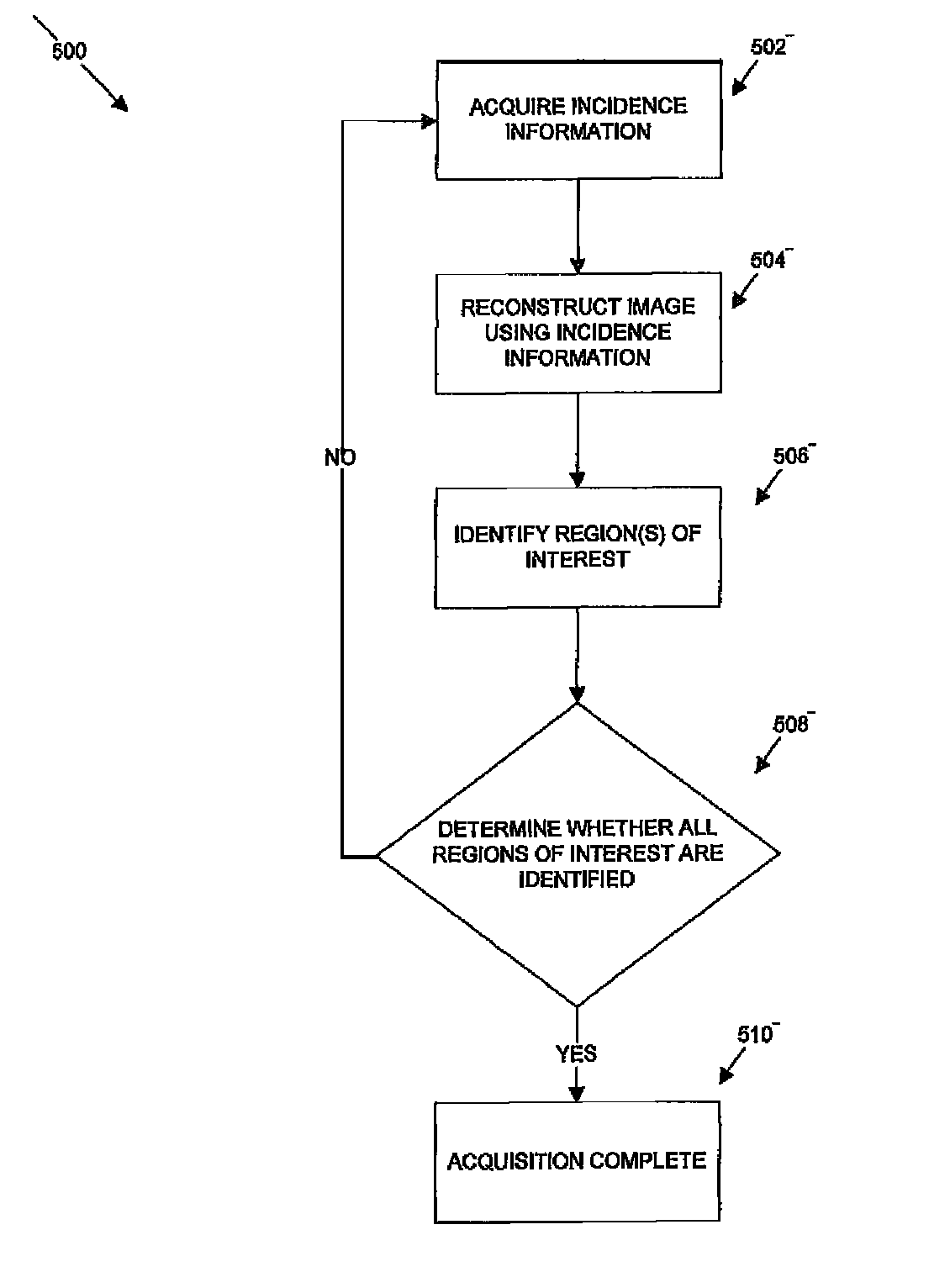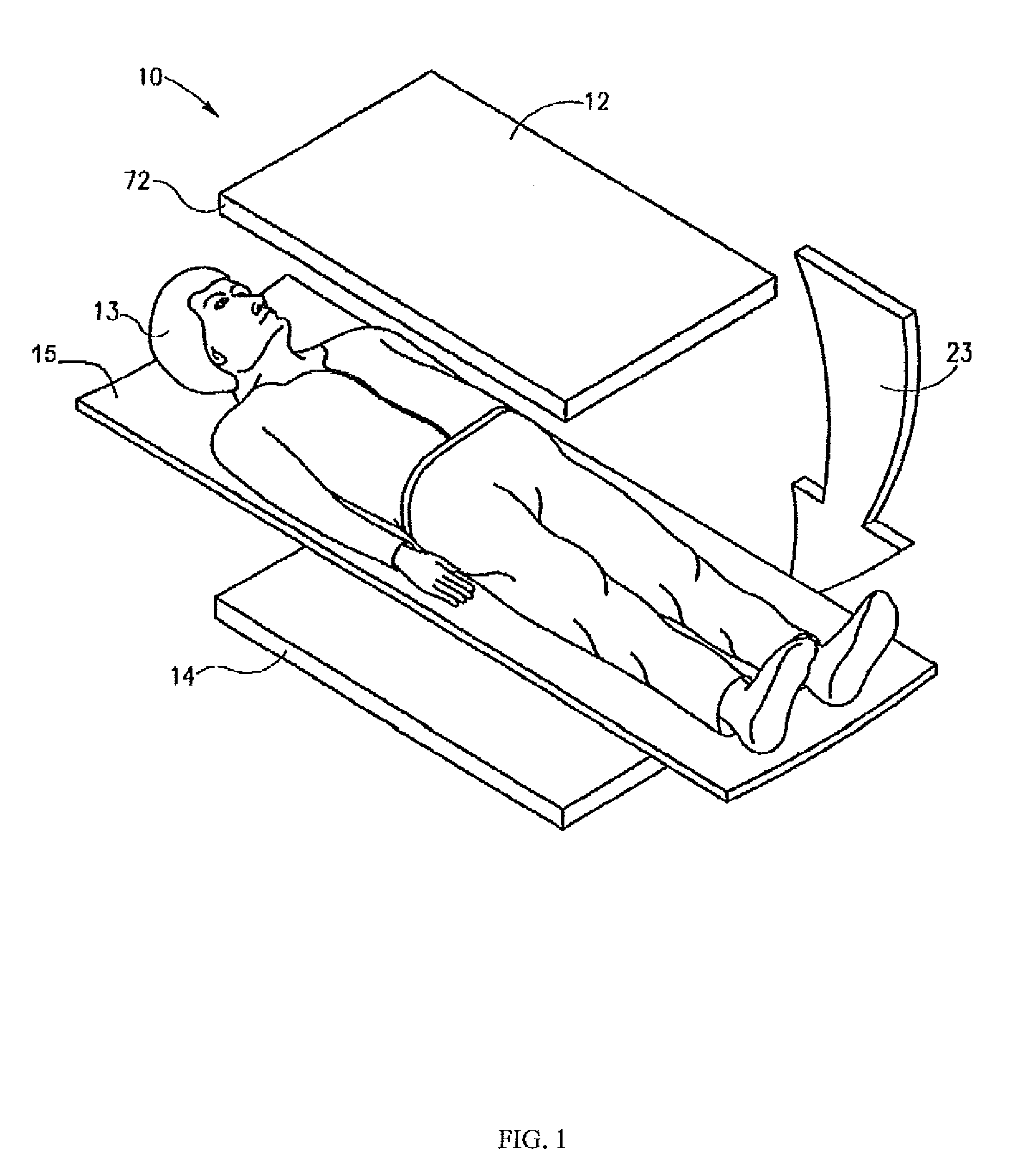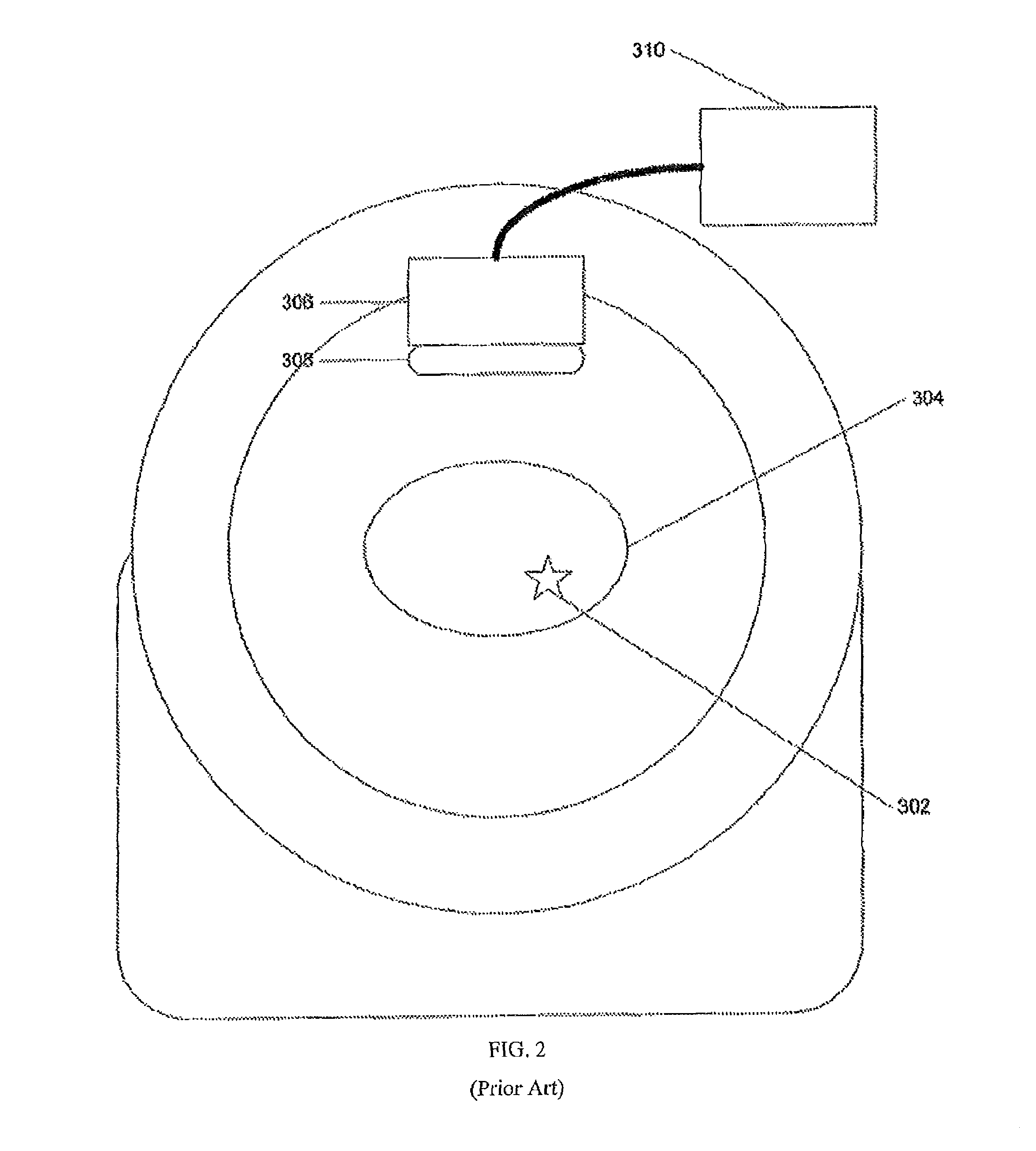Use of multifocal collimators in both organ-specific and non-specific SPECT acquisitions
a multi-focal collimator and organ-specific technology, applied in the field of imaging systems, can solve the problems of increasing costs, insufficient sensitiveness of current planar or spect imaging methods, and inability to achieve simple fan-beam collimators to achieve such requirements, so as to improve confidence and improve the ability to detect small lesions contrast
- Summary
- Abstract
- Description
- Claims
- Application Information
AI Technical Summary
Benefits of technology
Problems solved by technology
Method used
Image
Examples
Embodiment Construction
[0018]The following description is presented to enable any person skilled in the art to use a method to efficiently produce superior reconstructed images using, for example, planar imaging or Single Photon Emission Computed Tomography (SPECT). Various modifications to the preferred embodiments will be readily apparent to those skilled in the art, and the generic principles defined herein may be applied to other embodiments and applications without departing from the spirit and scope of the present disclosure. In the following description, numerous details are set forth for the purpose of explanation. However, one of ordinary skill in the art will realize that the present disclosure might be practiced without the use of these specific details. To more efficiently illustrate and describe embodiments of the present disclosure, identical reference numerals are used in the specification and drawings to identify parts that are essentially the same in different stages, versions or instanti...
PUM
 Login to View More
Login to View More Abstract
Description
Claims
Application Information
 Login to View More
Login to View More - R&D
- Intellectual Property
- Life Sciences
- Materials
- Tech Scout
- Unparalleled Data Quality
- Higher Quality Content
- 60% Fewer Hallucinations
Browse by: Latest US Patents, China's latest patents, Technical Efficacy Thesaurus, Application Domain, Technology Topic, Popular Technical Reports.
© 2025 PatSnap. All rights reserved.Legal|Privacy policy|Modern Slavery Act Transparency Statement|Sitemap|About US| Contact US: help@patsnap.com



